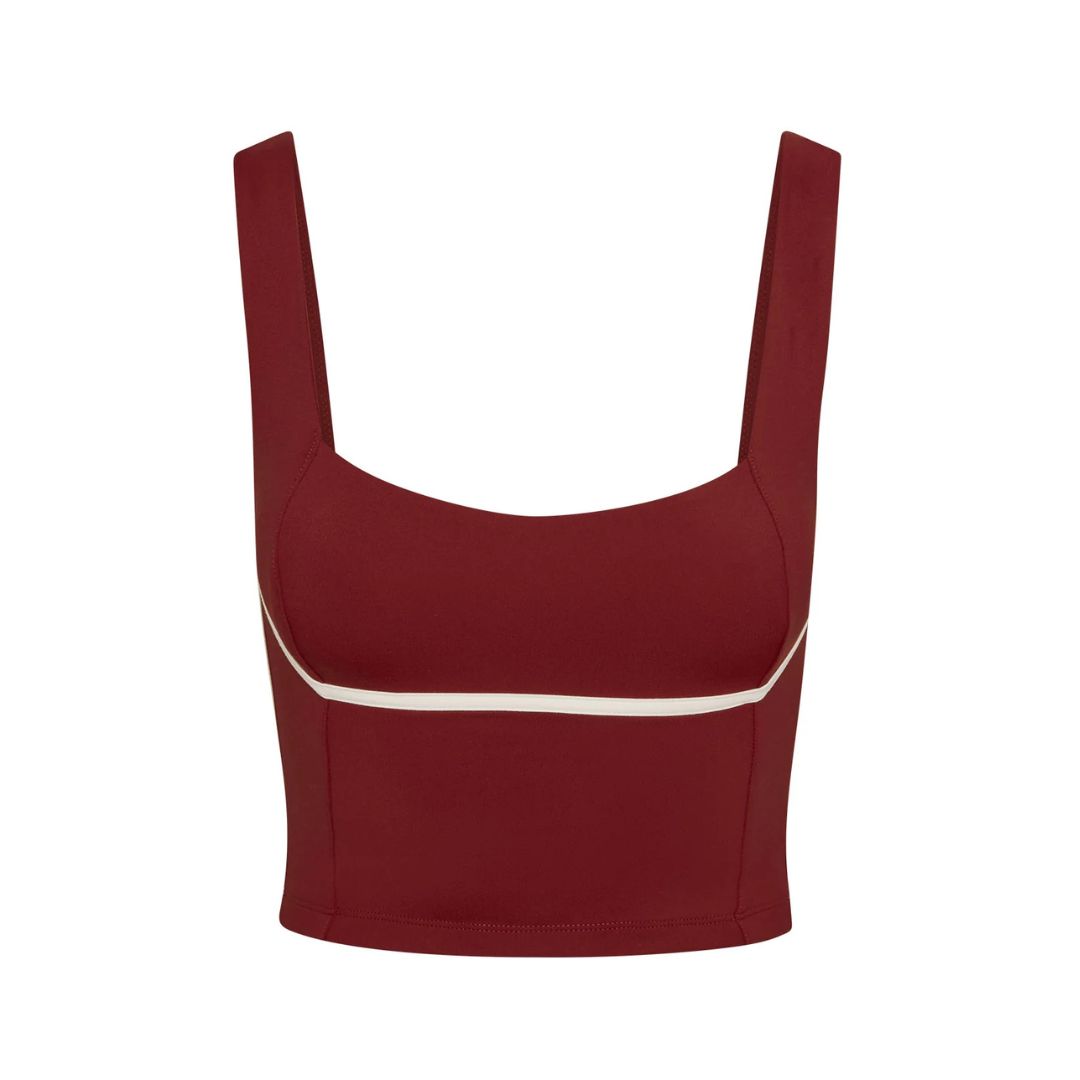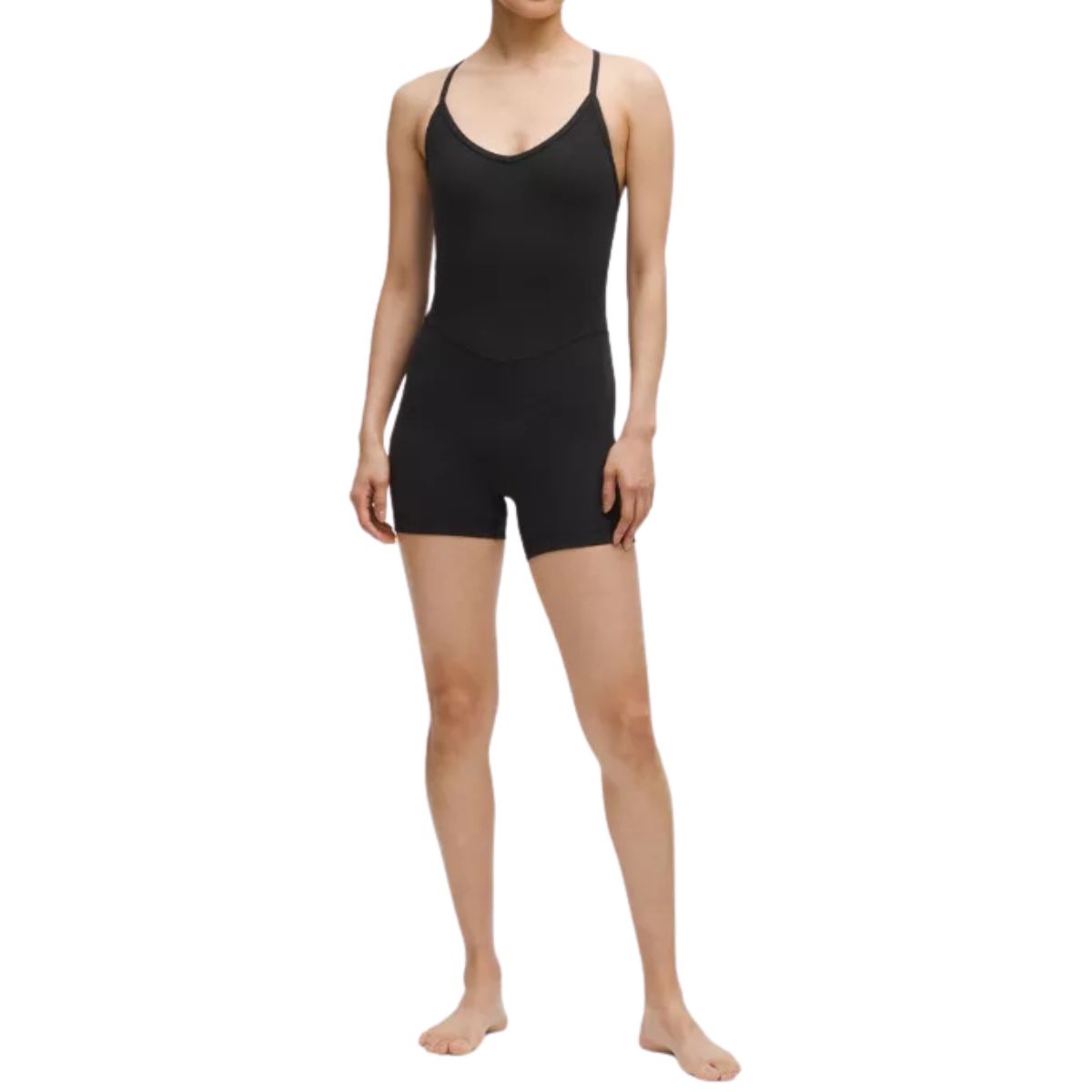Ditch the Squats – PTs Swear the Copenhagen Plank Is The Easiest Way To Build Muscle From Home
Not all planks are created equal.


It's official: exercises named after European countries are brutal. Bulgarian split squats, Romanian deadlifts, Turkish get-ups - we could go on. And now there's another killer move to add to the list: the Copenhagen plank.
An advanced variation on the classic full-body move, the Copenhagen plank adds some serious spice to the exercise we all love to hate - and unlike a classic plank, this one will work those inner thighs, too.
As for why you should bother, rest assured that we're not ones to recommend a move that won't give you some serious bang for your buck when it comes to banking benefits. Studies (like this one, published in the International Journal of Sports Physical Therapy) show that the Copenhagen plank is effective in helping to strengthen the adductor muscles (muscles that help to bring the legs into the centre of the body, located in the inner thigh) while other studies on the plank more generally (such as this study, from the BMC Sports Science, Medicine and Rehabilitation journal) show that it is asssociated with improvements in fitness, cardiovascular and metabolic responses.
Keep scrolling for all your need-to-knows, but while you're here, don't miss our guides to the different types of plank, find out how effective planks really are, and read about how I got on when I tried a one-minute plank every day for a week, here.
Copenhagen planks are being hailed as the best way to build muscle - so, how effective are they, really?
What is a Copenhagen plank?
On board with giving this advanced move a try? You might want to hold off committing while you learn what it actually involves.
"The Copenhagen plank is an advanced core and adductor strengthening exercise that challenges stability, balance, and muscular endurance," explains personal trainer at Freeletics, Rowan Clift. "Unlike traditional planks, which primarily target the anterior core, the Copenhagen variation involves supporting the top leg on an elevated surface (such as a bench or box) while keeping the bottom leg either suspended or lightly touching the ground.
"The focus in this move is on maintaining a rigid plank position while engaging the adductors of the top leg to stabilise the body. This makes it a particularly unique movement because it combines core strength with lower body muscular control, especially in the groin region."
Celebrity news, beauty, fashion advice, and fascinating features, delivered straight to your inbox!
Oof - not for the faint-hearted, then.
What are the benefits of a Copenhagen plank?
A move this advanced better pack a serious punch benefits-wise, right? To make it worth our time and effort. On that front, we have good news. The Copenhagen plank offers all the advantages of a standard plank, plus a few unique pros of its own.
1. They strengthen neglected muscles
We don't often specifically train the muscles we need to master the Copenhagen plank, and that's one of the reasons it's so good for us.
"One of the main benefits of Copenhagen planks is that they significantly strengthen the adductor muscles, which are often neglected in traditional strength training programmes," notes Clift. "Strong adductors are essential for lateral movement, change of direction, and injury prevention, particularly groin strains."
2. They're excellent for core strength
Just like your standard plank, the Copenhagen variation will recruit and fire up those abdominal muscles - and we're not just talking the front abs, but deep core and obliques, too.
"This move demands serious abdominal control to stay balanced," agrees Lockwood. Who doesn't want a stronger core?
3. They challenge balance and co-ordination
You might not automatically think about balance in strength training, but it's a vital component of an effective workout regimen. Any move that digs into those tiny, stabilising muscles (such as a plank) and focuses on time under tension will be building your balance skills.
"As the exercise also requires multiple muscles to fire together for stability and alignment, it is great for balance and coordination," says Lockwood. "In short, it's a powerful side plank that will seriously challenge and improve stability."
4. They reduce our risk of injury
Call us biased, but we love a multi-tasking move - and the fact that the Copenhagen plank might just prevent us from getting injured in future is a huge selling point.
"There’s evidence supporting the role of a Copenhagen plank in injury reduction, especially among footballers and runners," shares Clift, "making it an excellent addition to any performance or rehabilitation routine."
5. They can address muscle imbalances
Unilateral moves such as the Copenhagen plank (where you work one side of the body at a time) are useful for identifying and addressing any muscle imbalances that could lead to injuries, stresses and strains. While it's not unusual to find moves easier on one side than the other, any large discrepancy is a red flag.
Who are Copenhagen planks suitable for?
If you've read this far, you probably already know that a Copenhagen plank is not a beginner's move. That said, they're a great goal to aim for if you're just starting out.
"Copenhagen planks are best suited to intermediate or advanced exercisers with a solid foundation in core stability and side plank variations," advises Clift. "They’re particularly beneficial for athletes involved in multidirectional sports such as football, rugby, hockey, or martial arts, where groin strength and lateral stability are important. However, they can also be incorporated into rehab protocols for individuals recovering from groin or hip injuries, but this should be appropriately regressed and supervised by a professional.
"Beginners or those new to resistance training might find them too challenging initially and should build up with traditional planks, side planks, and adductor-specific movements before progressing to the Copenhagen plank."
How to do a Copenhagen plank with good form
As always, with any exercise, it's worth spending some time working on your form and technique, not only to avoid injury, but also to make sure that you're reaping maximum rewards for your work.
Gary Lockwood, CEO of 24/7 Fitness, advises the following steps to success:
- Firstly, lie on your side next to a bench or box (about knee or mid-shin height).
- Place your top leg on the bench — ideally with your inner knee or mid-shin resting on it.
- Your lower leg can either hang free (harder) or be gently assisted by touching the underside of the bench (easier).
- Place your lower elbow directly under your shoulder for side plank support.
- Next, brace your core and slowly lift your hips off the ground into a straight side plank.
- Engage your inner thigh, glutes, obliques, and shoulder to stay aligned and hold for time or perform controlled reps (lower hips slightly then lift back up).
- To ensure good form, maintain a straight line from head to foot and avoid letting your hips sag or rotate forward/backwards.
- Don’t hold your breath — keep breathing throughout.
Is a Copenhagen plank really enough to build muscle?
In a couple of words: probably not. Despite the hype, we wouldn't recommend solely relying on a Copenhagen plank for your muscle-building goals.
"Although Copenhagen planks are highly effective at activating and strengthening the adductors and core muscles, they are primarily an isometric (static) exercise," explains Clift. "As such, they're not ideal as a standalone tool for building significant muscle mass. To achieve hypertrophy (muscle growth), a programme typically needs progressive overload through resistance training with dynamic movements, higher volumes, and varying intensities.
"That said, Copenhagen planks can certainly complement a hypertrophy-focused routine by targeting hard-to-reach muscles and enhancing joint stability."
Shop MC UK's strength training essentials now:

Every workout warrants a decent sports bra, and a strength session is no exception. This Monday Body long line sports bra is one of Senior Health Editor Ally Head's current go-to's - it comes in several cute colourways, sweat wicks well, and offers medium support. Trust us on this one - it feels as good as it looks.
How often should I be doing Copenhagen planks?
The good news continues: this isn't a move you'll need to do every day.
"This is one of those exercises you don’t need to overdo to see results," agrees personal trainer Edwina Jenner. "Two to three times a week is plenty. Start with two sets of 10 to 20 seconds per side, gradually building up the hold time as your strength improves. The Copenhagen plank works muscles that often don’t get much attention, so you will feel it pretty instantaneously - you will most likely be sore the next day, which is normal.
"Listen to your body and focus on consistent practice rather than chasing long hold times. It’s more important to maintain a strong form and build up your strength slowly."

Anna Bartter is a freelance journalist who writes about health, fitness and women's lifestyle for publications including Stylist, Metro and Psychologies, among others.
She's always on a quest to find a variety of fun and functional workouts that give you the most bang for your workout buck and she's passionate about championing movement for everyone's mental and physical wellbeing.


